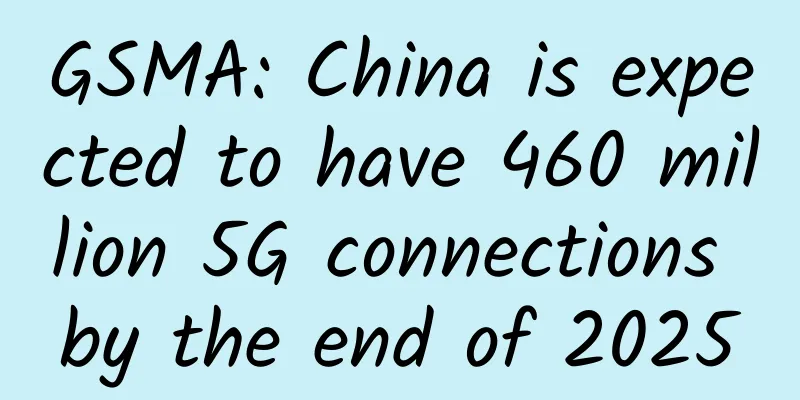GSMA: China is expected to have 460 million 5G connections by the end of 2025

|
Recently, GSMA released its latest report "China Mobile Economic Development Report 2019". The report stated that China is expected to become one of the world's leading 5G markets, with an estimated 460 million 5G connections by the end of 2025, accounting for 28% of the total connections. The report pointed out that as of the end of 2018, China was the world's largest mobile market, with 1.2 billion unique users, almost four times the size of North America. And as consumers and businesses continue to seek to take advantage of the many capabilities of next-generation networks, it is expected that by 2025, the adoption rate of 5G will be much higher than the global average. Accelerating 5G deployment "2G followed 3G and then broke through 4G and ran side by side." As we all know, although Chinese operators lagged behind some developed markets in launching 4G, after operators increased their investment in networks, mobile data speeds were improved. At the same time, compared with users in Australia and the United States, Chinese users migrated to 4G services at a faster rate, forming a mass market and economies of scale in a short period of time. The report shows that by the end of 2018, there were 1.2 billion 4G connections in China, equivalent to 77% of the total number of connections. By 2022, widespread coverage, affordable smart devices, greater use of data-intensive services, and demand for higher speeds will help to further increase 4G connections by 260 million and gradually phase out 2G and 3G. As consumers transition to 5G services, 4G adoption will decline. The report also clearly pointed out that 5G commercialization is just around the corner. In China, operators are evaluating the pros and cons of non-standalone and standalone 5G networking methods and corresponding networking solutions. At the same time, operators in some other markets have clearly stated that they will first adopt the non-standalone 5G model, incorporating existing 4G infrastructure and targeted small cells into hot spots. Standalone 5G networks will allow 4G and 5G services to run in parallel, eliminating the complexity of LTE integration while achieving economies of scale. China will host the 2022 Winter Olympics and Paralympics, which will further accelerate the pace of 5G deployment. China will become a leader in 5G commercialization along with Japan, South Korea, the United States and other countries, and will lead the network coverage process. GSMA Mobile Intelligence predicts that by 2025, China's 5G connections will exceed the total of North America and Europe, ranking first in the world. It is expected that by the end of 2025, China's 5G connections will reach 460 million, accounting for 28% of the country's total connections. Investment by major operators will further increase after 2020 GSMA pointed out that although network optimization and spectrum efficiency improvements are expected to make the cost per unit of data for 5G lower than that of 4G, the construction of new networks means that the cost of 5G construction may be higher in the early stages. The report pointed out that in recent years, mobile revenue has continued to grow, but the momentum has stabilized. In more developed markets in the Asia-Pacific region, including Japan and South Korea, core mobile revenue is under pressure from limited user growth and competition in the broader digital ecosystem. China's annual mobile revenue has continued to rise in the current decade and is expected to reach nearly US$177 billion (RMB 1.2 trillion) in 2020. From 2018 to 2025, China's operators' annual revenue will grow at a compound annual growth rate of 1.2%, and during this period, China's mobile revenue growth will account for 16% of the total global mobile revenue growth. Figure 1 China's mobile operator revenue (Source: GSMA Intelligence) As shown in Figure 1, the annual revenue growth rate of Chinese operators has been slowing down in recent years; due to fierce competition and retail price regulation, the growth rate is expected to be only 1% in 2021, lower than 4% in 2017 and far behind the growth rate of more than 14% in 2013. From 2021 to 2025, the growth rate will gradually flatten. Therefore, the compound annual growth rate of mobile revenue of 7.1% from 2010 to 2017 is expected to be difficult to reappear in the next seven years. At the same time, the report said that operators will set off the next wave of capital expenditure. From 2010 to 2018, Chinese operators invested more than US$268 billion (about RMB 1.9 trillion) in capital expenditure projects. The investment amount was the highest in 2015, exceeding the previous three years, as operators sought to provide almost ubiquitous 4G service coverage. After achieving this goal, capital expenditures declined significantly from 2016 to 2018, and spending gradually shifted to 4G network upgrades to provide performance improvements and faster throughput speeds. Figure 2 China’s capital expenditure and capital intensity (Source: GSMA Intelligence) Currently, Chinese operators are ready to start promoting 5G. Recently, China Unicom announced that it is expected to invest 6 billion to 8 billion yuan in 5G in 2019. It is predicted that the investment of major operators will further increase after 2020, which will likely increase the current 13% capital expenditure/revenue ratio. |
<<: If all operators become Yang Bailao, what will they use to build 5G?
>>: Detailed explanation of HTTP protocol security-related headers
Recommend
What are the similarities between social concepts and the SDN model?
The social principle seems to have a strange conn...
ServerHost: $1/month KVM-1GB/15GB/1Gbps unlimited traffic/8 computer rooms available
Today's topic is $1 VPS, and here's the i...
Faconhost: £17.5/year-1GB/15GB NVMe/500GB@300Mbps/Los Angeles 9929 line
Faconhost is a relatively new foreign hosting com...
Megalayer: Limited-time flash sale for Hong Kong servers starting at 199 yuan/month, Hong Kong 15~40M optimized bandwidth servers starting at 399 yuan/month, home broadband VPS starting at 50% off
Megalayer launched the "April Carnival, Cont...
Will 5G be the next disruptive technology?
The telecommunications industry likes to use the ...
SDN Trend Review: 2016 is the First Year of Software-Defined WAN
As 2016 enters its first day, Software Defined Wi...
Introduce the commonly used encoders and decoders in Netty
[[359182]] The previous article introduced Netty ...
OneTechCloud VPS for the school season is 20% off starting at 21 yuan/month, US CN2 GIA&9929/Hong Kong CN2&CMI large bandwidth/high defense optional
OneTechCloud (Yikeyun) brings you a discount code...
5G will become the golden key to open the era of the Internet of Things
The Internet of Things is not new. At the beginni...
Justhost newly launched New York VPS, multiple data centers in the United States/Russia/UK/Germany/Hong Kong, China, etc. starting from $1.16/month
JustHost.asia sent information about the new VPS ...
A brief tutorial on the Dig command
Hello everyone, I am Xianyu. I don’t know how oft...
Inventory: Ten key steps in the development of quantum communication in China, from following to partially leading
[[408654]] 01 Deceived-state quantum key distribu...
Ministry of Industry and Information Technology: We must seize the opportunities of global 5G and industrial Internet
On February 1, the Ministry of Industry and Infor...
The US 5G goal is "cold"! No one expected that the "ban" would slap itself in the face
Last year, the iPhone 12 was launched. The most o...
Omdia: Global Gigabit Broadband Users to Exceed 187 Million by 2025
LightReading reports that the COVID-19 pandemic h...









